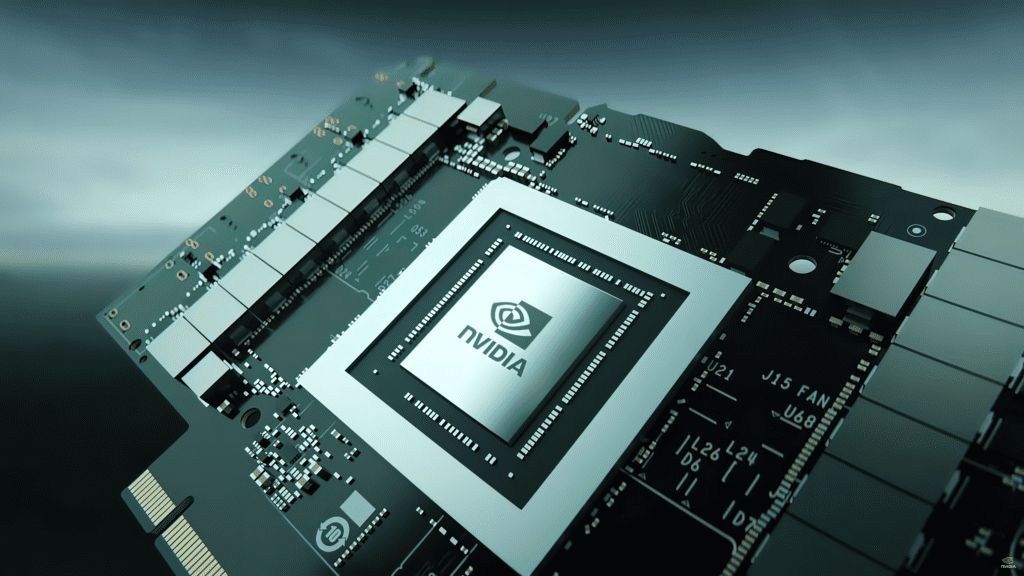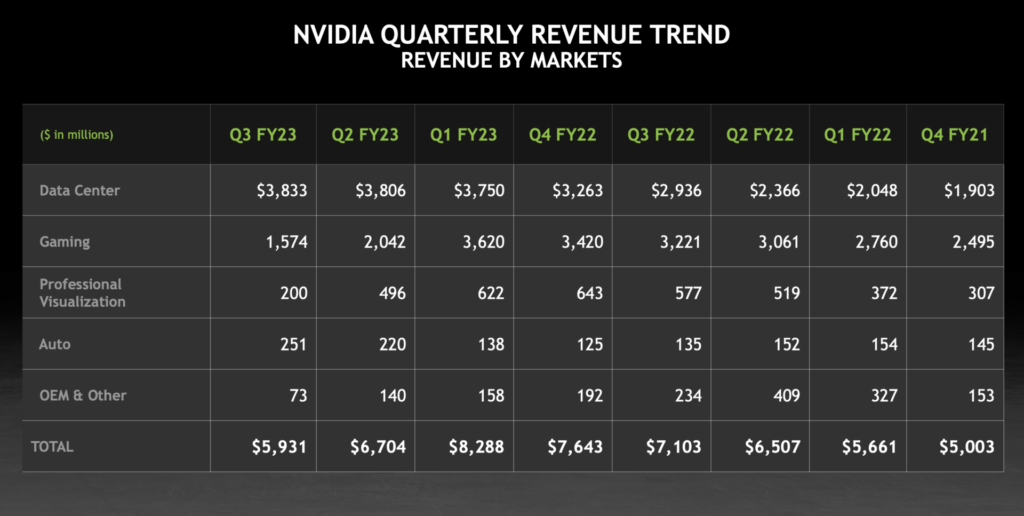At today’s market closure, chipmaker NVIDIA Corporation released its earnings results for the third fiscal quarter of 2023. The company was able to meet its revenue guidance from the previous quarter. Similar to other personal computer technology companies, NVIDIA has been worst hit by the inflationary wave this year, with sales to gamers and other customers suffering sharp declines and making up the company’s largest segment.
In the most recent quarter, NVIDIA reported $5.9 billion in revenue and $680 million in earnings per share, both of which represented large annual declines. The company projects $6 billion in revenue for its fourth fiscal quarter, reversing this quarter’s sequential decline to signify a tiny rise. However, the revenue will continue to decline yearly.

Wall Street experts had predicted that NVIDIA would report revenue of $5.8 billion and earnings per share of 70 cents.
However, while narrowly beating revenue projections, the company’s earnings per share came in at a staggering 27 cents per share. This represented a startling 50-cent decline compared to the same quarter last year, but a rise of one cent over the prior quarter.
The company’s operating expenses are to blame for the decline in earnings per share, according to a quick glance at NVIDIA’s income statement. At a period when the chip designer’s sales plummeted by 17%, these “blossomed” by 31% annually. Overall, NVIDIA’s operating income, net income, and profits per share have all decreased by an astonishing 77%, 72%, and 72%, respectively. This does not present a very positive picture in the income statement. These are the GAAP figures, while the non-GAAP results reveal a 50% decline in EPS, which is still not a good sign. The adjusted EPS, which was 58 cents, is the figure that is compared to analyst projections.

The fact that NVIDIA’s gaming and data centre revenue exceeded expectations is one reason why its shares are rising in aftermarket trading. Datacenter, which emphasised the need for any firm to diversify its income streams, remained to be NVIDIA’s saviour in the quarter. According to the official figures, this segment’s revenue was $3.9 billion, demonstrating for yet another quarter that NVIDIA is now a data centre firm rather than a gaming one. In its most recent quarter, NVIDIA had issued a warning that it anticipated a decline in gaming revenue. Data centre spending was estimated by analysts to be $3.72 billion and gaming revenue to be $1.42 billion.
More than half of NVIDIA’s total net sales ($3.9 billion) came from the $3.9 billion in revenue from data centres, which managed to rise by an amazing 31% annually while remaining stable sequentially. Due to inflation and the upgrade cycle being behind most significant spenders, there are concerns that expenditure in the sector will slow down at this time. The data centre industry is currently navigating the new U.S. sanctions against China, though. Due to these restrictions, NVIDIA is reportedly trying to save its China business by releasing a new product that complies with U.S. government regulations. These restrictions have prevented NVIDIA from selling its top data centre and machine learning graphics processing units (GPUs) to the nation.
Also Read:








